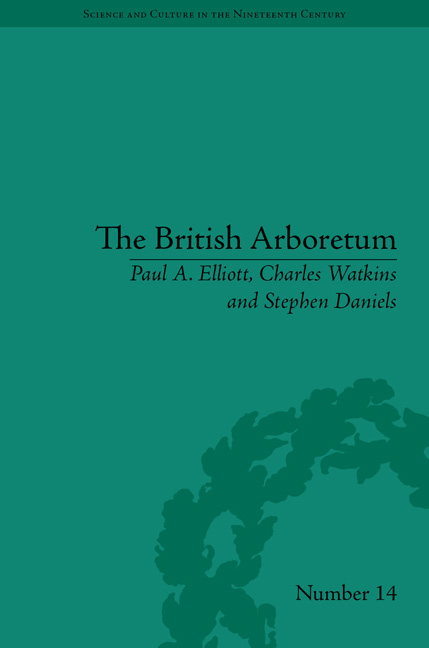Book contents
- Frontmatter
- CONTENTS
- List of Figures
- Preface
- Introduction
- 1 British Tree Cultures in the Nineteenth Century
- 2 Trees and Taxonomy
- 3 British Arboriculture, c. 1800–35
- 4 John Claudius Loudon's Arboretums
- 5 The Botany of the Arboretum Britannicum
- 6 The Derby Arboretum
- 7 Estate Arboretums
- 8 Public Urban Arboretums
- 9 The Transformation of Victorian Public Arboretums
- Conclusion
- Notes
- Works Cited
- Index
Preface
- Frontmatter
- CONTENTS
- List of Figures
- Preface
- Introduction
- 1 British Tree Cultures in the Nineteenth Century
- 2 Trees and Taxonomy
- 3 British Arboriculture, c. 1800–35
- 4 John Claudius Loudon's Arboretums
- 5 The Botany of the Arboretum Britannicum
- 6 The Derby Arboretum
- 7 Estate Arboretums
- 8 Public Urban Arboretums
- 9 The Transformation of Victorian Public Arboretums
- Conclusion
- Notes
- Works Cited
- Index
Summary
This book was motivated by recent work in the history of science and cultural and historical geography and a belief that arboretums have had a profound impact on British cultural and scientific history. We embark upon an exploration of the historical and cultural geographies of nineteenth-century arboretums in order to try to understand the various principles and practices underpinning their design and the management and consumption of tree collections, particularly tensions between naturalistic and geometric aesthetics and botanical taxonomies. This book traces interconnections between horticulture, botany and forestry, the role of institutions and the relationships between arboretums and their various social and cultural contexts including the horticultural trade, scientific development of forestry and importance of international networks, exploration, trade and imperialism in tree collecting. Although the principal focus is British arboretums (with some reference to the Republic of Ireland), just as John Claudius Loudon's Arboretum et Fruticetum Britannicum (1838, hereafter Arboretum Britannicum) was something of an international collaboration, and like nineteenth-century planted arboretums, any study of British arboretums is inherently both national and international.
This book is the result of a major project on the cultural and historical geographies of the arboretum begun at the School of Geography, Nottingham University and funded between 2004 and 2007.
- Type
- Chapter
- Information
- The British ArboretumTrees, Science and Culture in the Nineteenth Century, pp. xi - xivPublisher: Pickering & ChattoFirst published in: 2014



